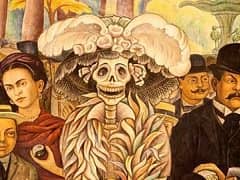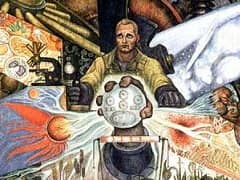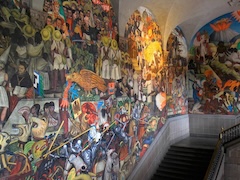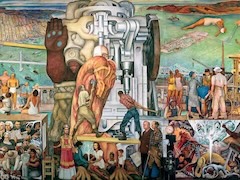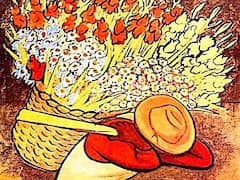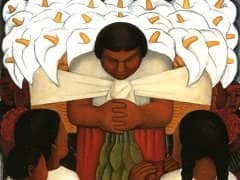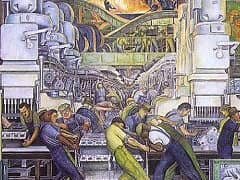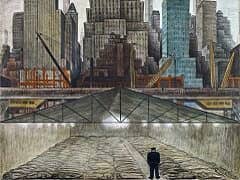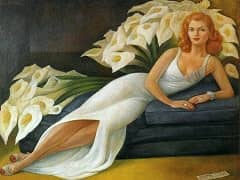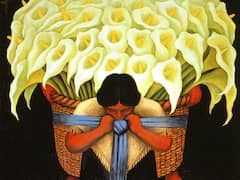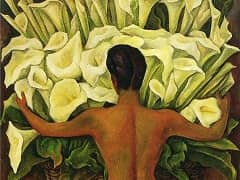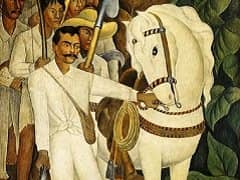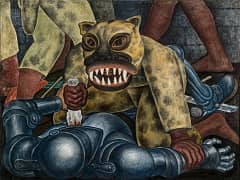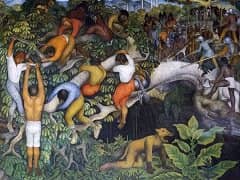Pan American Unity, 1940 by Diego Rivera

This ten-panel mural marks the last time Rivera was in the United States, having completed it in November of 1940. Almost like an exhibit himself, Rivera was on display as he painted, and was awarded a generous $1,000 per month as well as $1,000 for travel expenses during his stay while completing the work. He included the images of his wife, Frida Kahlo, woodcarver Dudley C. Carter, and himself, planting a tree and holding the hand of actress Paulette Goddard, and was assisted in the project by Thelma Johnson Streat, an African-American artist and textile designer. Painted for the Golden Gate International.
Although Rivera created a vast number of easel works, drawings and prints, which made his fortune as his fame increased, his renown was based on his murals. These displayed a sensibility that was radically different from that of his colleagues in the Mexican mural movement, for he possessed none of Orozco's introversion and lacked Siqueiros's political passion. He was an extrovert with a prodigious facility for painting that stemmed not only from his cosmopolitan training but also from his intellectual openness to mathematics and science as well as the humanities. He was also capable of conceiving art in the context of its historical potential, rather than as a purely personal statement or as a political weapon. Whereas his two colleagues had immediate experience of the human cost of the Revolution, Rivera never experienced the fighting directly, returning to Mexico only when the conflict had abated. For Rivera, injustice was abstract, not concrete; he was therefore not as extreme in his politics and personal opinions as were his colleagues. Although he had a lifelong sympathy with Marxist ideals, he was not psychologically committed to the Communist Party's shifting line, especially when it interfered with art. This led to his exploitation by capitalist interests during the early 1930s. Rivera's art, however, transcends such issues, through his remarkable idiosyncratic fusion of Renaissance, academic, modernist and indigenous Mexican techniques, styles and motifs, and his creation from them of a humanistically and aesthetically responsible socialist iconography.

